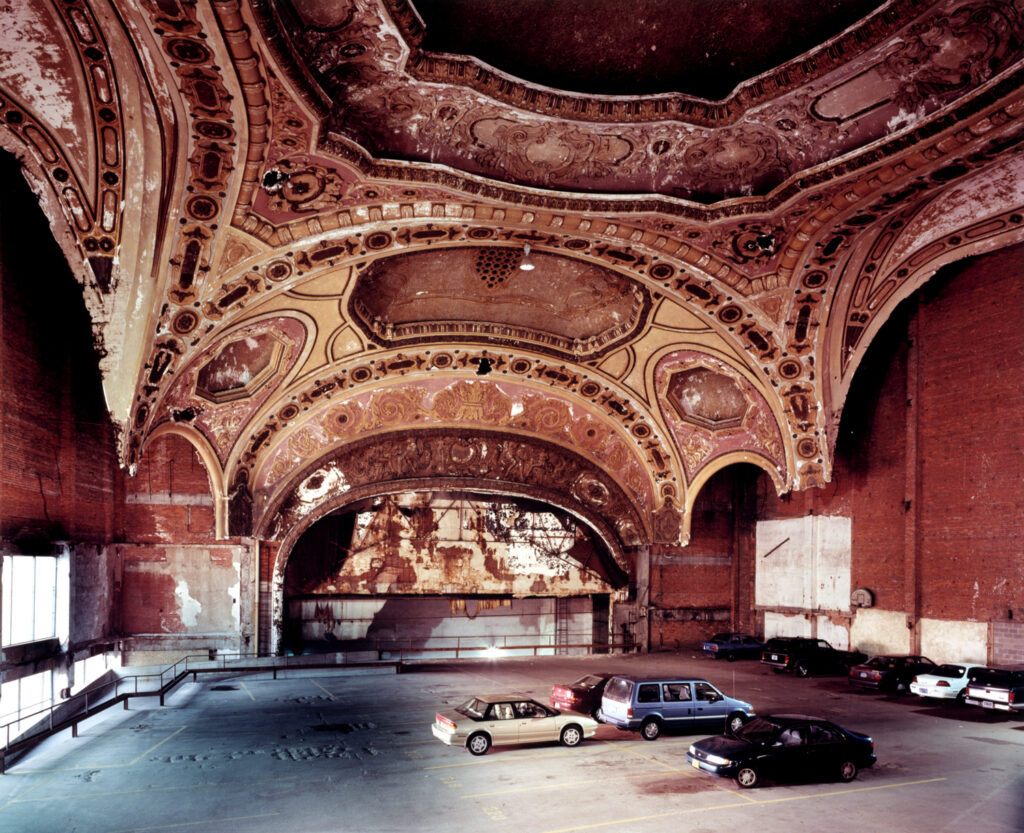| Location | Berlin, Germany |
| Date | 2002-5 |
| Sponsoring Organization | Federal Cultural Foundation of Germany |
| Project Office | Büro Philipp Oswalt |
| Partner Organizations | Leipzig Gallery of Contemporary Art, Bauhaus Dessau Foundation, archplus |
| Budget | Approx. $4.3 million |
| Website | www.shrinkingcities.com |
For decades population experts and urban planners have warned of overcrowding in the world’s major cities.
But paradoxically, even as the world’s population increases by one million a week, for every city that expands another loses population. Whether slow or sudden, drastic population shifts can lead to a cycle of job loss, poverty, crime, and even greater exoduses. Around the world cities such as Johannesburg, Detroit, and Liverpool are rotting from the inside out. The resulting blight and abandonment can be a cruel reward for those who stay behind, often the elderly or people subsisting on the economic fringes of society.

In planning circles the prevailing wisdom has been that the solution to urban blight is new growth. Throughout the 1970s and 1980s urban revitalization projects—from public housing to subsidized office blocks to stadiums—were built in cities like Manchester and Detroit, only to be torn down 20 years later and replaced with another dose of optimism and capital. How then does one rebuild in a city that doesn’t need buildings?
Based in Germany, the interdisciplinary Shrinking Cities project began as a response to the mass exodus from East to West following the fall of the Berlin Wall in 1989. Reunification emptied once-thriving industrial areas such as Halle-Leipzig seemingly overnight.
In an attempt to spur investment, Germany poured money into rebuilding the area’s infrastructure. The approach failed, leaving the region dotted with “illuminated meadows” where municipalities had laid foundations, power lines, sewage mains, and even streetlights on plots of land that went undeveloped by the private sector.
By the late 1990s the problem had become so acute that Shrinking Cities hosted an international competition to address it. Funded by the Federal Cultural Foundation of Germany, the project focused on four metropolitan areas that had experienced drastic population declines: Halle-Leipzig; Manchester-Liverpool; Ivanovo, Russia; and Detroit.
“The idea of the project is to compare the cultural and urban changes in Germany with other international cases,” says Philipp Oswalt, the project director. “Even though the development in Germany is quite shocking, it is not the first or only place where this kind of crisis is taking place.” According to the group’s research more than 450 cities with populations above 100,000—59 in the United States alone—have lost 10 percent or more of their populations since 1950. By enlisting teams of architects, artists, journalists, and others to study the problem, the Berlin-based group hoped to learn from the successes and failures of other shrinking cities. “The classic urban-planning tools don’t work,’’ Oswalt says. “And there’s a lack of ideas or methodology as to how to solve the problem.”
Ten projects from each area—ranging from photographic studies of housing to cultural studies of reappropriated commercial buildings—were selected for a traveling exhibition. The show, held in Berlin in 2004, offered a survey of the physical and cultural landscapes of shrinking cities, revealing the often-surprising ways that countercultures can take root in the decaying, abandoned spaces of cities. A second competition, also held in 2004, will result in specific interventions to be built and tested in the former East Germany.


Penang, Malaysia
Population in 2003: 25,000
Population loss: 35,000 | 58%
Period: 1990–2003
Stefan Thimmel
Leninsk-Kuznetski, Russia
Population in 2002: 110,200
Population loss: 24,000 | 18%
Period: 1989–2002
Isolde Brode


Tiflis, Georgia
Population in 2002: 1,081,600
Population loss: 165,400 | 13.3%
Period: 1989–2002
Katja Kruchkow
Beirut, Lebanon
Population in 2000: 1,200,000
Population loss: 300,000 | 25%
Period: 1996–2000
Ali Saad


















READ OR LEAVE A COMMENT